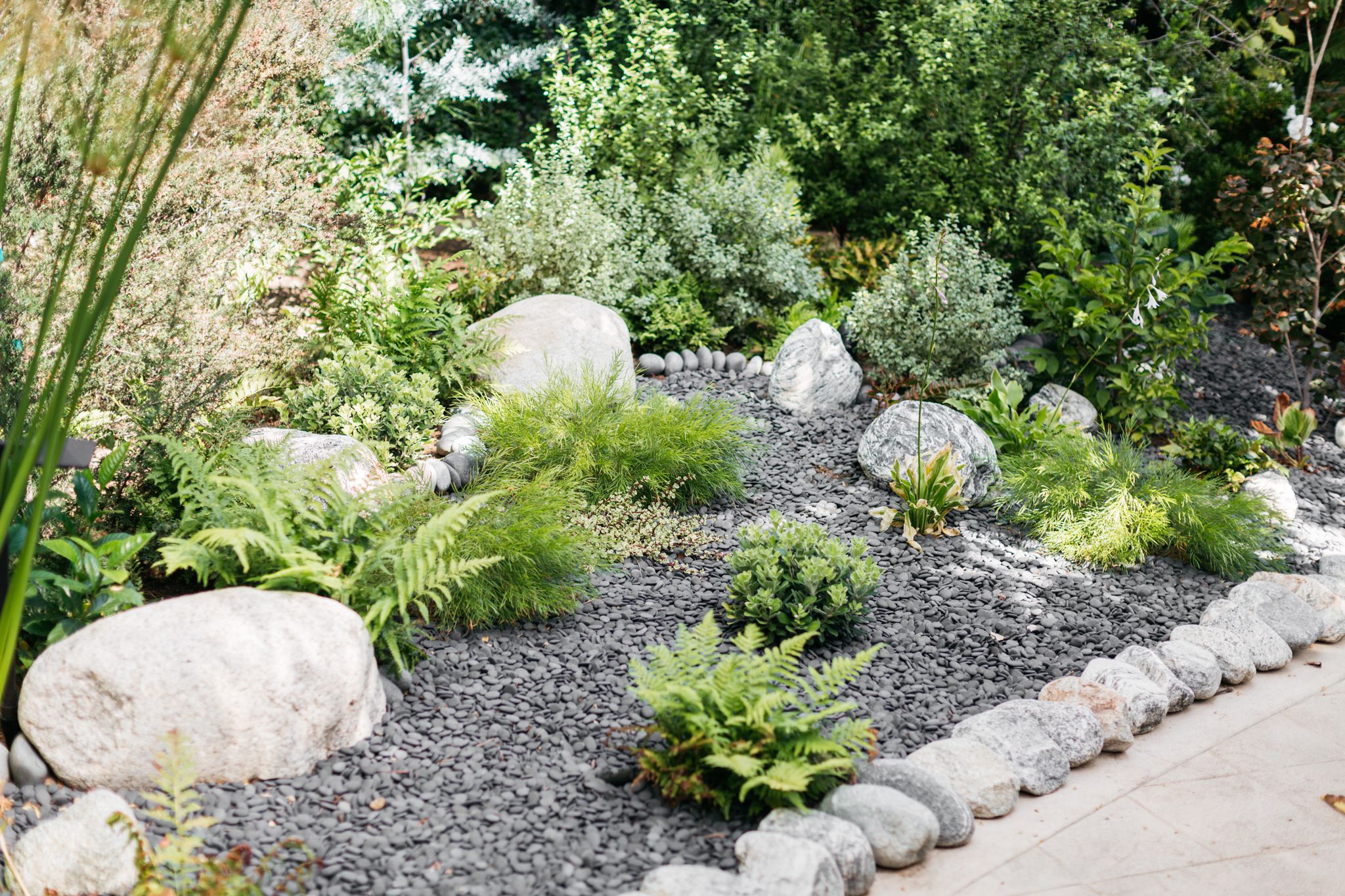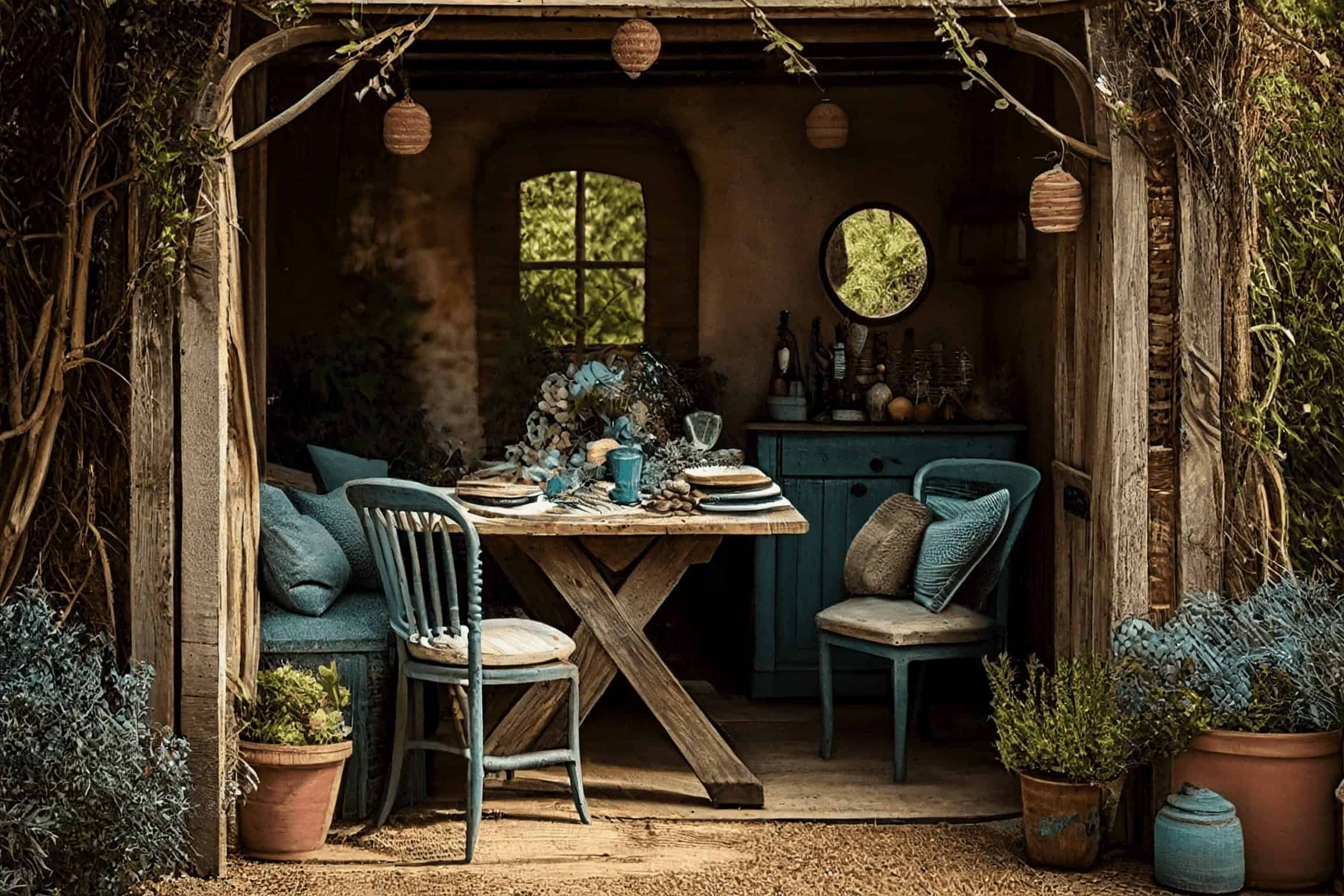Rock gardens have emerged as an increasingly popular landscaping trend in recent years. This concept beautifully combines the natural allure of stones with vibrant plant elements, resulting in outdoor spaces that are both serene and aesthetically pleasing. By integrating various textures and colors, rock gardens can transform any area into a visually striking retreat, inviting relaxation and contemplation.
In this article, we will explore a range of rock garden ideas that you can easily implement to elevate your yard. From selecting the right types of stones to pairing them with suitable plants, these concepts will help you create a stunning oasis at home. Whether you have a small balcony or a spacious yard, there’s a rock garden design perfect for your outdoor space.

Key Elements of Rock Garden Design
When designing a rock garden, there are several key elements to consider to create a harmonious and attractive look. These elements include the choice of rocks, suitable plants, and additional accents and features that can enhance the beauty of your garden.
Rock Selection
Rock is a key element in a rock garden, and choosing the right type of rock can make a big difference in the final look of your garden. There are many different types of rock that can be used, from pebbles to large boulders. Some popular types of rock for rock gardens include river rock, granite, slate, and limestone. Each type of rock has unique characteristics in terms of color, texture, and shape.
When choosing rocks for your garden, consider factors such as the color of your home, the style of landscaping you want, and the climate and soil conditions in your area. For example, if you want a natural, organic look, river rock with a rounded shape and smooth surface may be a great choice. Meanwhile, if you want a more modern, geometric look, granite with sharp, regular cuts may be an attractive choice.
Plants That Are Suitable for Rock Gardens
Although rocks are the main element, plants still play an important role in creating balance and life in a rock garden. Choosing the right plants can help soften the harsh appearance of rocks and add color and texture to your garden design. Some types of plants that are suitable for rock gardens include:
- Succulents: These plants are very hardy and require little maintenance. Some examples of popular succulent plants for rock gardens are echeveria, sedum, and aloe vera.
- Ornamental grasses: Ornamental grasses such as mini elephant grass or needle grass can provide interesting texture and natural movement among the rocks.
- Ground cover plants: Ground cover plants such as creeping thyme or sedum can grow between the cracks in the rocks, creating a soft, natural look.
- Flowering plants: To add color and visual interest, you can plant drought-tolerant flowers such as lavender, sunflowers, or echinacea.
- Trees and shrubs: Small trees or shrubs can be used as focal points or to provide vertical structure in a rock garden. Some good choices include Japanese maple trees, evergreen trees, or boxwood shrubs.
Additional Accents and Features
To add interest and functionality to your rock garden, consider adding some additional accents and features. Some ideas to consider include:
- Fountain or small pond: The water element can add a refreshing and calming dimension to your rock garden. You can create a simple fountain out of rocks or add a small pond surrounded by rocks.
- Garden lighting: Garden lights can create a dramatic atmosphere and allow you to enjoy your rock garden even at night. Consider using spotlights to highlight large rocks or certain plants.
- Walkways: Creating a walkway with flat stones or gravel can add both functional and aesthetic elements to your rock garden.
- Statues or ornaments: Adding statues or garden ornaments can create an interesting focal point and add character to your rock garden.
- Seating area: Creating a seating area with garden benches or a table and chairs set can allow you to enjoy the beauty of your rock garden even more.
Rock Garden Design Ideas for Inspiration
Now that we’ve covered the main elements of a rock garden, let’s explore some design ideas that can inspire you to create your dream rock garden. Here are some concepts you can consider:
1. Japanese Zen Garden
A Japanese Zen garden, also known as a dry rock garden, is one of the classic examples of a rock garden. The concept combines large rocks that represent mountains or islands with smooth gravel that is raked to create patterns that resemble ripples in water. Minimal plants, such as Japanese maples or bamboo, are used to add a touch of greenery without disrupting the simplicity of the design.
To create a Japanese Zen garden in your home, choose a quiet, sheltered area. Use large rocks with interesting shapes as focal points, then arrange white or gray gravel around them. Create patterns in the gravel using a special rake to create the illusion of water movement. Add some neatly trimmed greenery to contrast with the rocks.
2. Alpine Rock Garden
Alpine rock gardens are inspired by high mountain landscapes. This concept combines rocks of various sizes to create a look similar to a rocky mountainside. Small, cold-hardy plants that are commonly found in mountainous areas are used to add color and texture.
To create an alpine rock garden, start by creating a varied land contour using soil and large rocks. Arrange the rocks of various sizes to create a natural, irregular look. Choose alpine plants such as saxifrage, edelweiss, or gentian to plant among the rocks. Make sure to provide good drainage because alpine plants do not like soil that is too wet.
3. Mediterranean Rock Garden
A Mediterranean rock garden combines typical elements of the Mediterranean landscape, such as weathered rocks, aromatic plants, and warm colors. This concept is suitable for areas with dry and hot climates.
To create a Mediterranean rock garden, use rocks with warm colors such as ochre, terracotta, or ivory white. Arrange the rocks irregularly to create a natural and relaxed look. Add Mediterranean plants like lavender, rosemary, or sage between the rocks. You can also add decorative elements like terracotta pots or mosaics to add a Mediterranean touch.
4. Waterfall Rock Garden
Combining water features with a rock garden can create a stunning focal point in your yard. A waterfall rock garden combines the beauty of rocks with the soothing sound of trickling water.
To create a waterfall rock garden, start by creating a tiered landscape. Use large rocks to form the structure of the waterfall, then add smaller rocks around it to create a natural look. Install a water pump and hose to circulate the water from the bottom to the top. Aquatic plants and moisture-loving plants like ferns or hostas can be added around the waterfall to create a more lush look.
5. Desert Rock Garden
A desert rock garden is inspired by the dry yet beautiful desert landscape. This concept combines warm-colored rocks and drought-tolerant plants to create a unique and easy-to-maintain look.
To create a desert rock garden, use rocks in colors like red, orange, or brown to reflect the colors of the desert. Arrange the rocks in an irregular pattern and add sand or fine gravel around them. Choose desert plants like cactus, agave, or yucca to plant among the rocks. You can also add accents like driftwood or (fake) animal skulls to add character to your desert rock garden.
Closing
Rock gardens offer a unique and captivating way to enhance your outdoor space. By thoughtfully combining various elements such as stones, plants, and accents, you can create a harmonious retreat that reflects your personal style. Whether you choose a serene Japanese Zen garden or a vibrant Mediterranean design, the possibilities are endless for crafting your ideal oasis.
Ultimately, the beauty of a rock garden lies in its versatility and low maintenance requirements. These gardens can thrive in diverse climates and adapt to various landscaping styles. As you embark on your rock garden journey, remember to enjoy the process of creating a space that not only looks stunning but also provides a peaceful sanctuary for relaxation and contemplation.


